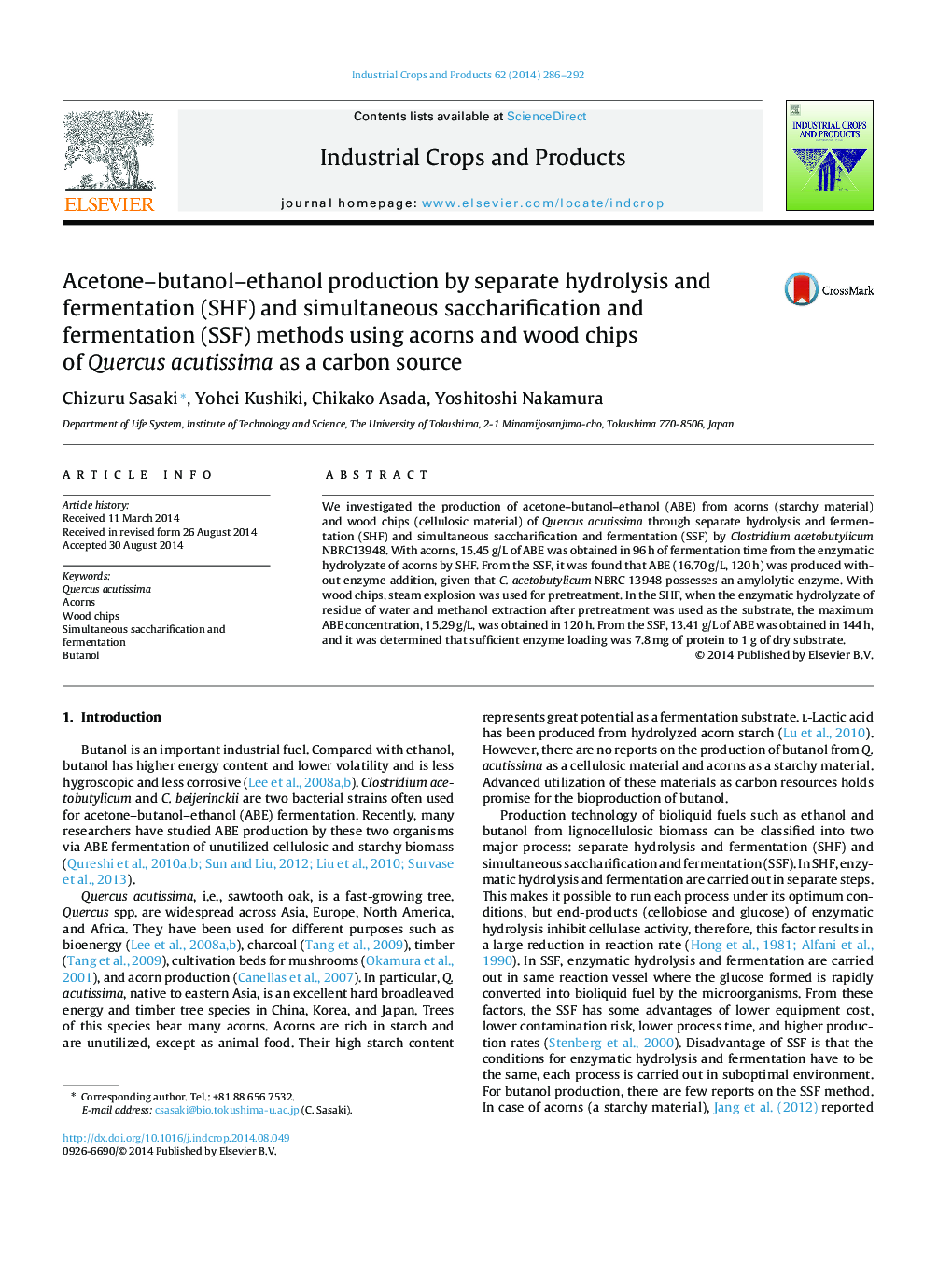| Article ID | Journal | Published Year | Pages | File Type |
|---|---|---|---|---|
| 6376506 | Industrial Crops and Products | 2014 | 7 Pages |
Abstract
We investigated the production of acetone-butanol-ethanol (ABE) from acorns (starchy material) and wood chips (cellulosic material) of Quercus acutissima through separate hydrolysis and fermentation (SHF) and simultaneous saccharification and fermentation (SSF) by Clostridium acetobutylicum NBRC13948. With acorns, 15.45Â g/L of ABE was obtained in 96Â h of fermentation time from the enzymatic hydrolyzate of acorns by SHF. From the SSF, it was found that ABE (16.70Â g/L, 120Â h) was produced without enzyme addition, given that C. acetobutylicum NBRC 13948 possesses an amylolytic enzyme. With wood chips, steam explosion was used for pretreatment. In the SHF, when the enzymatic hydrolyzate of residue of water and methanol extraction after pretreatment was used as the substrate, the maximum ABE concentration, 15.29Â g/L, was obtained in 120Â h. From the SSF, 13.41Â g/L of ABE was obtained in 144Â h, and it was determined that sufficient enzyme loading was 7.8Â mg of protein to 1Â g of dry substrate.
Related Topics
Life Sciences
Agricultural and Biological Sciences
Agronomy and Crop Science
Authors
Chizuru Sasaki, Yohei Kushiki, Chikako Asada, Yoshitoshi Nakamura,
